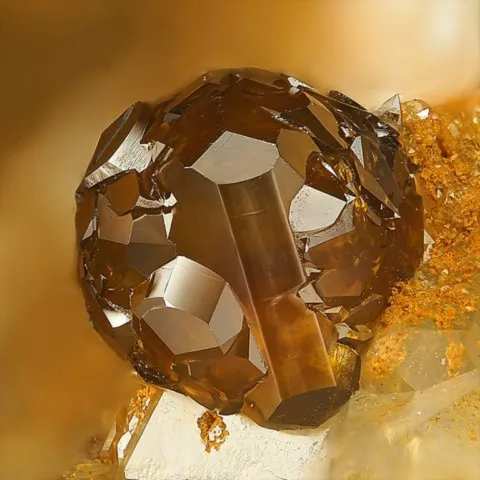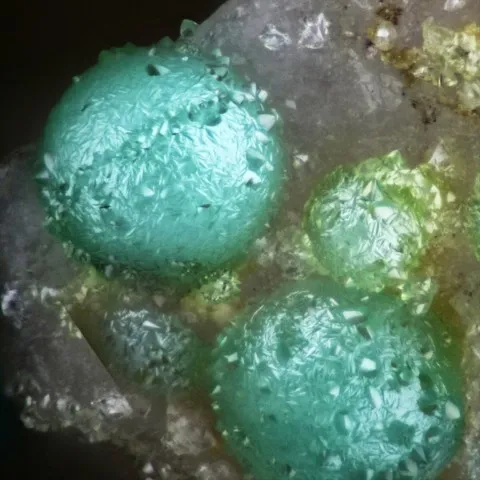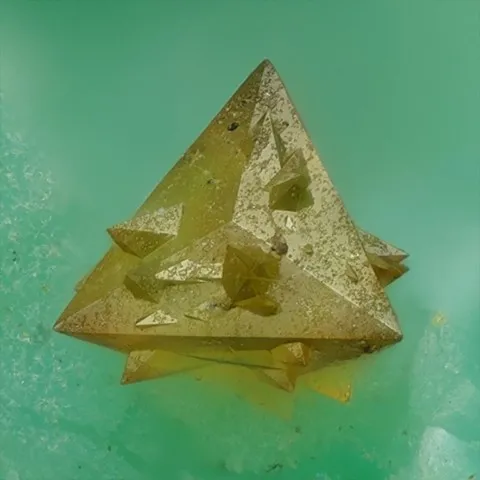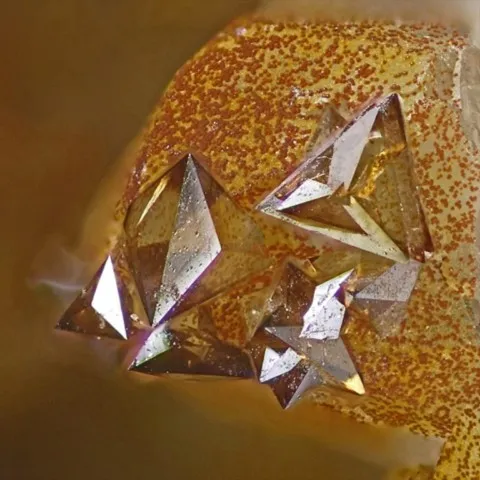EULYTINE
Class : Silicates
Subclass : Nesosilicates
Crystal system : Cubic
Chemistry : Bi4(SiO4)3
Rarity : Very rare
Eulytine (or eulytite) is the only known bismuth silicate. It is a very rare hydrothermal mineral, but nevertheless well represented in polymetallic veins. Its name comes from the Greek eu (good) and lusis (dissolution), due to its very low melting point. Eulytine is found in small tetrahedral crystals not exceeding 1 mm in bismuth-rich hydrothermal veins. It is yellowish-gray to grayish-white, green to bluish-green in color, sometimes straw yellow or brown, rarely colorless.
Main photo : Eulytine from Hechtsberg quarry, Hausach, Freiburg, Baden-Württemberg, Germany © Stephan Wolfsried
Eulytine in the World
Twinning
Twins are known on {001}.
Fakes and treatments
No fake listed for this mineral species.
Hardness : 4.5
Density : 6.1 to 6.6
Fracture : Irregular
Streak : White
TP : Translucent to transparent
RI : Not determined
Birefringence : 0
Optical character : None
Pleochroism : None
Fluorescence : None
Solubility : -
Magnetism : None
Radioactivity : None





